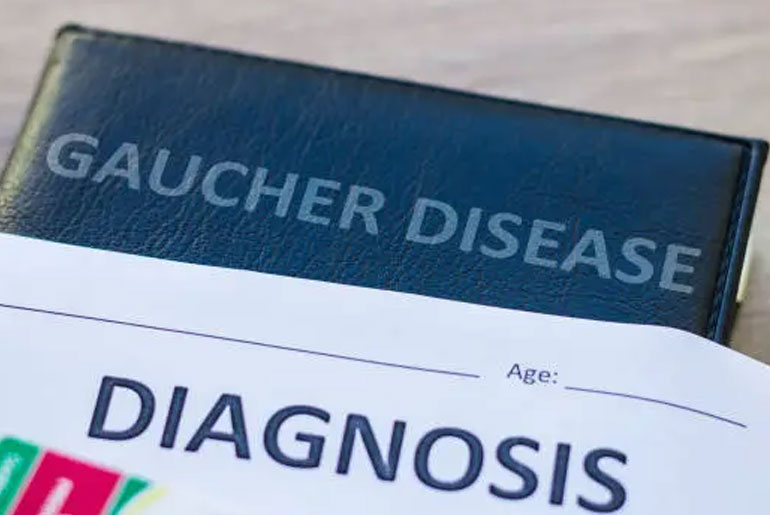Gaucher disease is a genetic disorder that occurs when the body is unable to break down certain fats, leading to their accumulation in cells. This condition is caused by mutations in the GBA gene, which encodes the enzyme glucocerebrosidase. This enzyme is essential for breaking down glucocerebroside, a type of lipid. When glucocerebrosidase is deficient or absent, glucocerebroside accumulates within cells, particularly in the liver, spleen, and bone marrow. The excess fat buildup disrupts normal cellular function and leads to various symptoms affecting different parts of the body.
Types and Symptoms of Gaucher Disease
Gaucher disease is categorized into three main types based on the presence and severity of neurological involvement:
- Type 1 (Non-neuronopathic Gaucher Disease): This is the most prevalent form, accounting for about 90% of all cases. Unlike other types, it does not affect the nervous system. Symptoms primarily involve the spleen, liver, and bones and include splenomegaly (enlarged spleen), hepatomegaly (enlarged liver), bone pain, fractures, chronic fatigue, and easy bruising due to low platelet count. Type 1 can appear at any age and varies in severity.
- Type 2 (Acute Neuronopathic Gaucher Disease): This is a rare but severe form of the disease that progresses rapidly. Infants with Type 2 experience significant neurological impairments, including poor muscle tone, seizures, difficulty swallowing, and developmental delays. The condition leads to severe complications and is often fatal within the first few years of life.
- Type 3 (Chronic Neuronopathic Gaucher Disease): This form is less severe than Type 2 but still involves neurological symptoms that develop later in childhood or adolescence. Affected individuals may exhibit eye movement disorders, coordination difficulties, seizures, and cognitive impairment. They also experience the same symptoms as Type 1, such as organ enlargement and bone-related issues. The progression of Type 3 varies, with some individuals living into adulthood.
Diagnosis:
Diagnosing Gaucher disease involves a combination of clinical evaluation, family history, and laboratory tests. A blood test is performed to measure the activity of glucocerebrosidase—low enzyme activity is a key indicator of the disease. Additionally, genetic testing can confirm the presence of mutations in the GBA gene, providing definitive proof of the disorder. Since symptoms can overlap with other conditions, early diagnosis is crucial for effective management and treatment.
Treatment Options for Gaucher Disease
Although Gaucher disease has no cure, various treatment options help manage symptoms and improve quality of life:
- Enzyme Replacement Therapy (ERT): This is the primary treatment for Gaucher disease. It involves intravenous infusions of a synthetic form of glucocerebrosidase to compensate for the missing enzyme. ERT helps reduce the size of the liver and spleen, improve bone health, and alleviate symptoms. However, it does not address neurological complications in Types 2 and 3.
- Substrate Reduction Therapy (SRT): This oral medication works by reducing the production of glucocerebroside, preventing its accumulation in cells. It is often prescribed to patients who cannot undergo ERT or those with milder disease forms. SRT helps control symptoms and slow disease progression but may not be suitable for all patients.
Gaucher disease is a complex genetic disorder that affects multiple organs and, in some cases, the nervous system. While there is no cure, early diagnosis and appropriate treatment can significantly improve symptoms and prevent severe complications. Enzyme replacement therapy and substrate reduction therapy remain the most effective treatment options available. Individuals experiencing persistent fatigue, easy bruising, organ enlargement, or neurological symptoms should seek medical evaluation to rule out Gaucher disease and receive timely intervention.
Disclaimer:
The information contained in this article is for educational and informational purposes only and is not intended as a health advice. We would ask you to consult a qualified professional or medical expert to gain additional knowledge before you choose to consume any product or perform any exercise.






